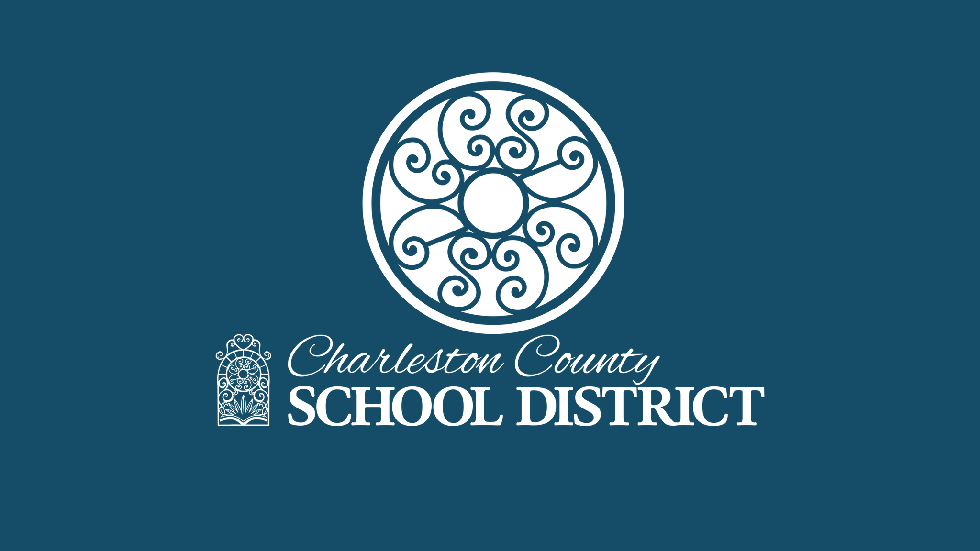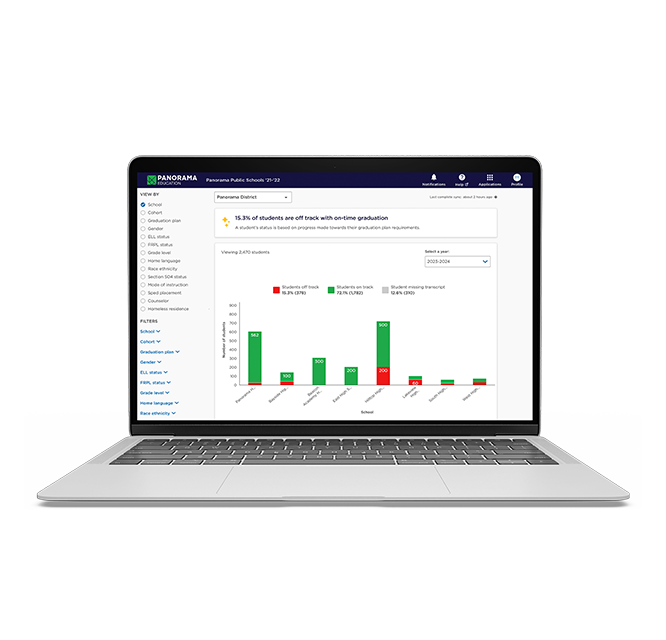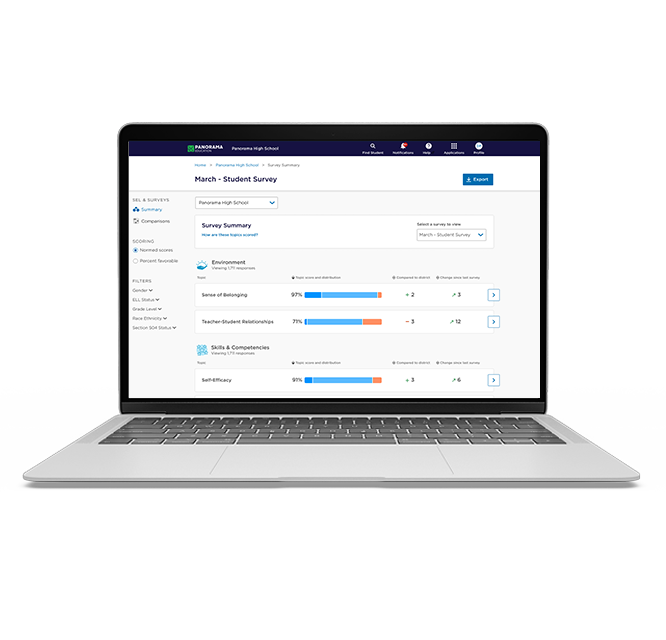Charleston County School District (CCSD), one of South Carolina’s largest districts, serves more than 50,000 students across 87 schools. Through a multi-year partnership with Panorama Education, Charleston transformed its approach to data, re-engaged its community, and strengthened systems of support.
Challenges
- Students and staff felt disconnected after hybrid learning, and district leaders needed a way to gauge well-being.
- Charleston’s commitment to MTSS was strong, but systems were fragmented across departments and data sources.
- Teams relied on multiple spreadsheets for data analysis, limiting collaboration and consistent visibility into student needs.
- With 87 schools, CCSD needed coherent systems that balanced district alignment with school-level flexibility.
Solution
Results
- Charleston’s partnership with Panorama strengthened districtwide MTSS processes, deepened collaboration, and created a data-informed culture.
- Educators across roles now use the same dashboards to identify needs, monitor progress, and align tiered supports.
- By centralizing intervention and progress monitoring plans in Panorama Student Success, school teams save hours each week previously spent on manual data collection and reporting.
- Teams can now identify at-risk students earlier and coordinate supports more effectively across departments.
Challenges
Coming out of hybrid learning during the 2020-2021 school year, Charleston’s leaders faced a clear problem. “Everyone felt disconnected,” recalled Megan Bocchino, Director of School Climate. “We wanted a pulse check—directly from students and staff—about well-being: How are you feeling? Where are areas for growth and opportunity?”
The district’s long-standing commitment to comprehensive student support—addressing academics, behavior, and emotional wellness—was being tested by fragmented systems and uneven access to data. Counselors, psychologists, and teachers relied on separate spreadsheets, often working in silos. “We have a very solid and deep commitment to MTSS in our district, dating back 15 years,” said Lisa Allison, Executive Director of Student Support Services. But teams needed clearer systems to connect the dots between holistic student data.
With 87 unique schools, Charleston also struggled to maintain consistency across initiatives. “In a large district, you have to design systems that outlast all of us and truly benefit students,” explained Heather Anderson, Director of School Counseling. Leaders sought a way to unify their work under one vision, one that honored school autonomy but also promoted shared practices and accountability.
Charleston’s leaders knew they needed a unified, data-driven approach that would both elevate student voice and strengthen coherence across schools.
Solution
To meet those challenges, CCSD partnered with Panorama Education to build an intentional, phased approach, beginning with Panorama Surveys and Engagement and Check-Ins, then expanding to Palmetto Pathways for graduation tracking and most recently, too Student Success. This progression aligned with the district’s long-term MTSS goals and its vision for a holistic student support system.
Adopting Student Surveys and Teacher and Staff Surveys began as a way for leaders to understand the student and staff experience during the return to in-person learning. “Surveys gave us a new way to elevate student voice at scale,” said Bocchino. “We wanted to hear from all students and staff to inform plans for returning [to in-person learning] and for more intentional planning.”
These results became a launchpad for school counselors and leaders to act on data. By adding Check-Ins, the district created touchpoints with students who self-identified needs around belonging, self-management, and life skills. “Historically, RTI lived mostly in academics. Surveys and Check-Ins helped mirror those best practices for behavior and emotional wellness,” explained Bocchino.
Charleston’s next expansion centered on Palmetto Pathways, a state-led initiative in partnership with Panorama to help districts monitor graduation readiness and course completion. “We had a lot of great foundational work with Panorama and the State Department,” said Anderson. “With [Palmetto] Pathways, we’re learning as we go. It helps to be open-minded and willing to listen to others who are embedded into this programming every day.”
Building on that MTSS foundation and the momentum from Palmetto Pathways, Charleston then launched Student Success to unify academic and behavioral intervention tracking. District leaders began by building buy-in among key stakeholders and effectively training staff. They held sessions specific to principals and partnered closely with Panorama on planning and facilitation. “Since we had such a large MTSS structure, we worked with our teams to identify what were the ‘must-dos’ [in Student Success] and what were the opportunities for schools to use these tools to support their work,” said Bocchino.
To sustain this multi-faceted work, Charleston prioritized professional learning and strategic advising with Panorama’s Teaching & Learning team. Leaders trained MTSS liaisons in every school to serve as implementation champions. “We've been intentional about changing our language from ‘the MTSS lead does it all’ to ‘the liaison brings learning back to the team,’” said Heather Anderson, Director of School Counseling. That shift helped ensure districtwide ownership and long-term sustainability.
Results
Charleston’s multi-year partnership with Panorama has reshaped how the district understands, supports, and celebrates its students. The work has strengthened MTSS systems, deepened collaboration, and created a shared culture of data-driven care.
Teachers, counselors, and administrators now use the same dashboards to identify needs and monitor progress. “We’re all looking at the same data,” said Allison. “That means we’re all working together to support the same student.” Panorama dashboards are now integral to professional learning communities (PLCs), helping educators connect Tier 1 classroom strategies with targeted Tier 2 and Tier 3 supports.
Since adopting Panorama Student Success, the district has centralized intervention and progress monitoring plans, saving school teams hours of manual data entry and reporting each week. Educators who once managed multiple spreadsheets can now view a single, unified profile for every student. Instead of spending meetings chasing down data, educators can use that time for planning student supports.
Most importantly, the culture of the district has shifted. Panorama’s tools and professional learning have helped Charleston move from compliance-based reporting to a culture grounded in reflection, collaboration, and proactive support. “Moving from admiring data to acting on data can feel intimidating,” Anderson said. “Panorama has given us the action steps to change that mindset.”
Looking ahead, the district has a goal to have all fifth graders reading on grade level by 2027. Using Panorama to progress monitor and implement interventions is a crucial step on this path. Fortunately for Charleston County School District, comprehensive student support is no longer just a goal—it’s a sustainable, data-informed practice embedded across schools.










![How AI Ready Is Your District? [Infographic]](https://www.panoramaed.com/hubfs/iStock-1912513615.jpg)